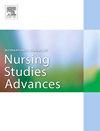西班牙医院外周静脉导管相关静脉炎的临床流行病学预测因素:一项国家队列研究的结果
IF 3.1
Q1 NURSING
International Journal of Nursing Studies Advances
Pub Date : 2025-05-28
DOI:10.1016/j.ijnsa.2025.100355
引用次数: 0
摘要
外周静脉导管(PIVC)是必不可少的医疗器械,但它们经常导致静脉炎、浸润和闭塞等并发症。识别危险因素是减少这些并发症的关键。目的估计西班牙医院PIVC相关静脉炎的发生率,并确定临床和流行病学危险因素。方法:我们于2023年2月1日至28日在西班牙80家医院进行了一项前瞻性队列研究。在非ICU、非急诊、非儿科病房接受pivc的成年住院患者(≥18岁)符合条件。由训练有素的护士每天对9387例患者的13812例pivc进行随访,直到拔管、静脉炎发作(Maddox分级≥2)或15天。我们计算了每100个导管天的累积发病率和发病率密度。多变量Cox比例风险模型估计了预测因子的风险比(hr)——性别、年龄组、输注药物数量、医院规模和住院时间。结果发生静脉炎1302例,累计发病率9.43%;发病率密度0.14 / 100人小时)。独立危险因素为女性(HR 1.32, 95% CI 1.21-1.45)、年龄65-79岁(HR 1.25, 95% CI 1.12-1.40)、使用≥2种药物(HR 1.50, 95% CI 1.35-1.67)、医院规模≥1000张床位(HR 1.30, 95% CI 1.12-1.52)。静脉炎风险在插入后48-96小时达到高峰。结论静脉炎的发生率仍高于推荐水平。多变量分析发现,女性、输注药物数量较多、患者年龄较大、医院规模较大、PIVC停留时间较长是静脉炎的主要独立预测因素。注册:未注册。本文章由计算机程序翻译,如有差异,请以英文原文为准。
Clinical-epidemiological predictors of phlebitis associated with peripheral intravenous catheters in Spanish hospitals: results of a national cohort study
Background
Peripheral intravenous catheters (PIVC) are essential medical devices, yet they frequently lead to complications such as phlebitis, infiltration, and occlusion. Identifying risk factors is key to reducing these complications.
Objectives
To estimate the incidence of PIVC‑associated phlebitis in Spanish hospitals and identify clinical and epidemiological risk factors.
Methods
We performed a prospective cohort study in 80 Spanish hospitals from 1 to 28 February 2023. Adult inpatients (≥18 years) receiving PIVCs in non‑ICU, non‑emergency, non‑pediatric wards were eligible. A total of 13,812 PIVCs in 9387 patients were followed daily by trained nurses until catheter removal, phlebitis onset (Maddox grade ≥ 2), or 15 days. We calculated cumulative incidence and incidence density per 100 catheter‑days. Multivariable Cox proportional hazards models estimated hazard ratios (HRs) for predictors—sex, age group, number of infused medications, hospital size, and dwell time.
Results
Phlebitis occurred in 1302 PIVCs (cumulative incidence 9.43 %; incidence density 0.14 per 100 person‑hours). Independent risk factors were female sex (HR 1.32, 95 % CI 1.21–1.45), age 65–79 years (HR 1.25, 95 % CI 1.12–1.40), administration of ≥ 2 medications (HR 1.50, 95 % CI 1.35–1.67), and hospital size ≥ 1000 beds (HR 1.30, 95 % CI 1.12–1.52). Phlebitis risk peaked 48–96 h post‑insertion.
Conclusions
Phlebitis incidence remains above recommended levels. Multivariable analysis identified female sex, a higher number of infused medications, older patient age, larger hospital size, and longer PIVC dwell time as the main independent predictors of phlebitis. Registration: Not registered.
求助全文
通过发布文献求助,成功后即可免费获取论文全文。
去求助
来源期刊

International Journal of Nursing Studies Advances
Nursing-General Nursing
CiteScore
5.80
自引率
0.00%
发文量
45
审稿时长
81 days
 求助内容:
求助内容: 应助结果提醒方式:
应助结果提醒方式:


